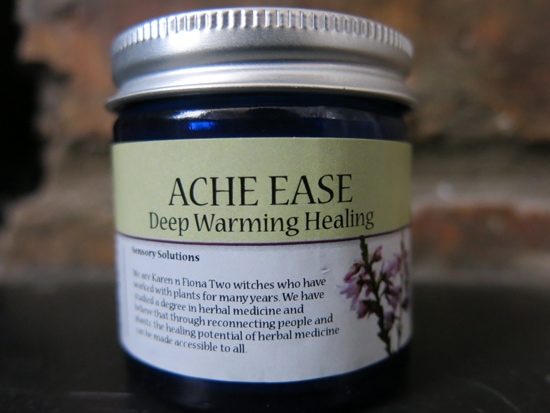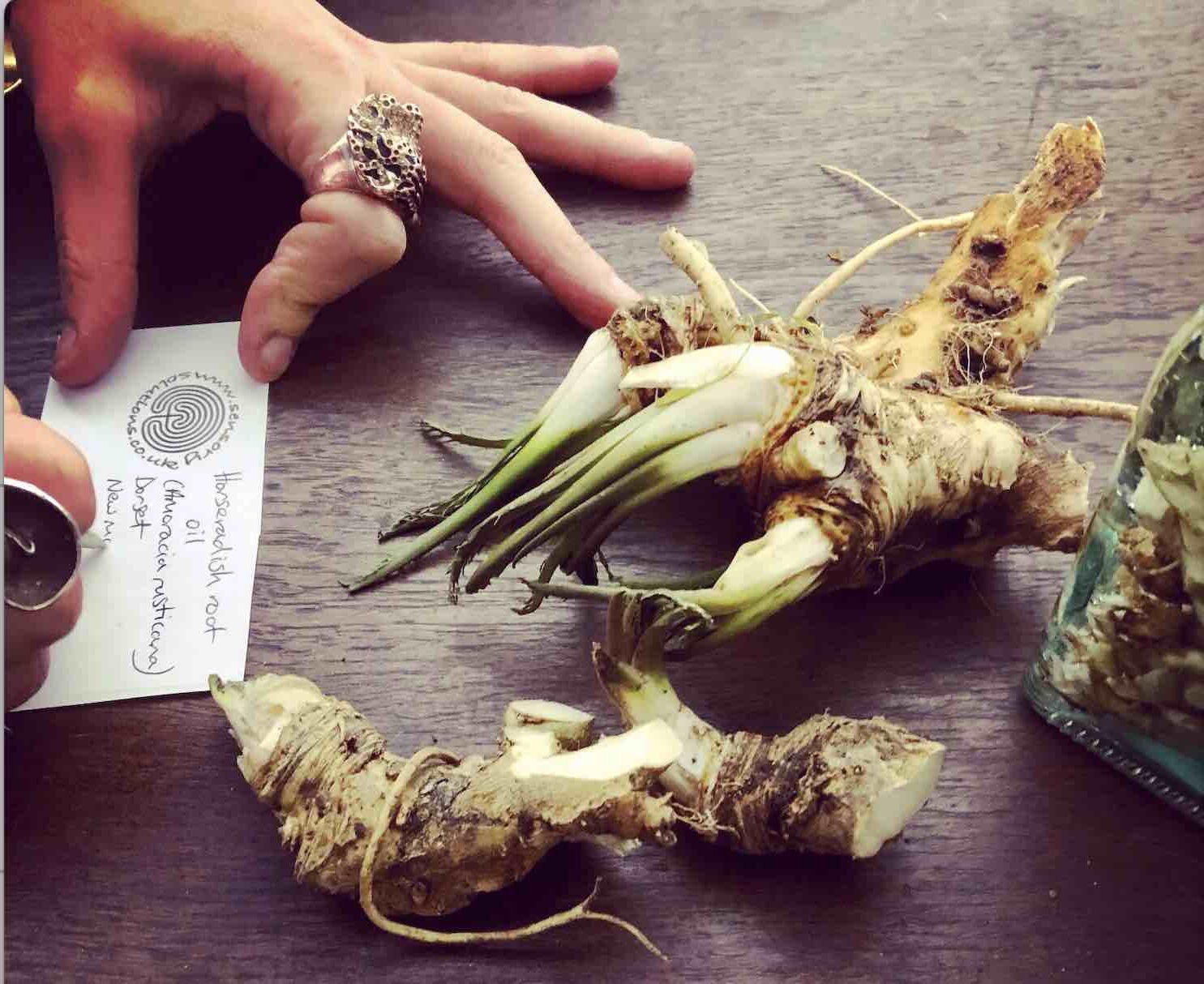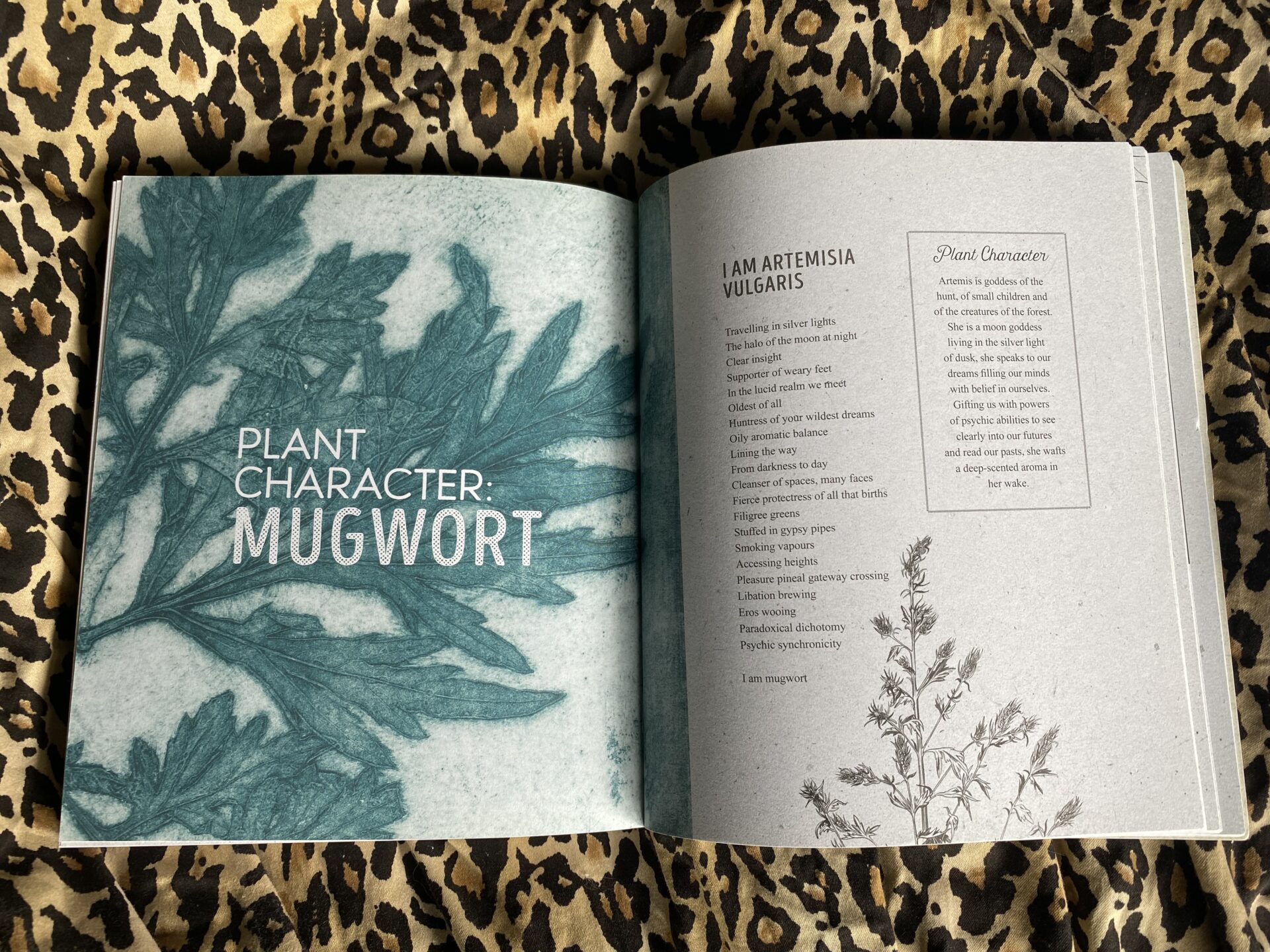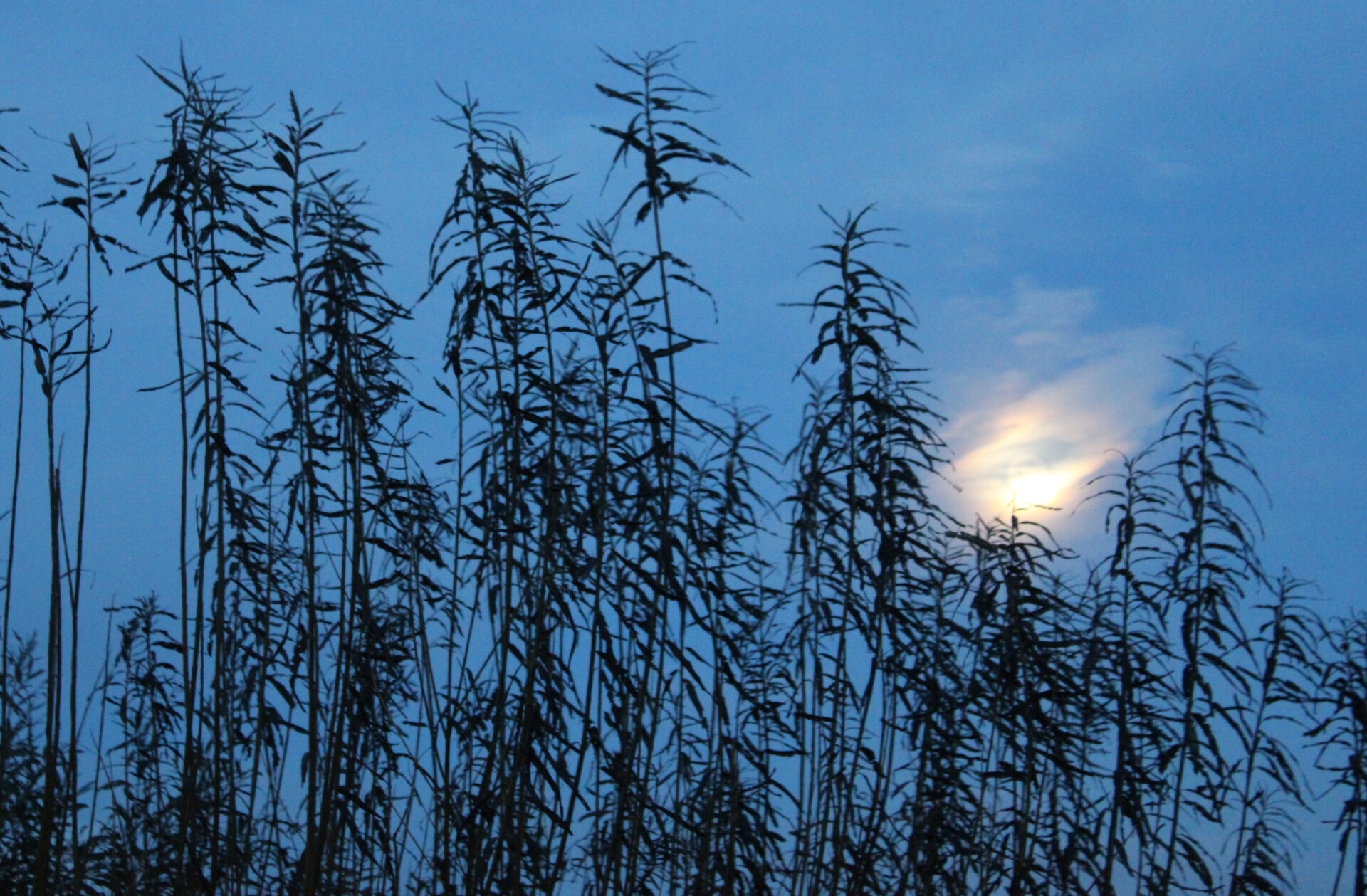HOT HORSERADISH ROOTS…

Horseradish classified under the domain of the planet Mars.
It’s creeping towards the start of the freezing winter months and all things warming and spicy are the order of the season. We’ve just been digging up horseradish root with some of our apprentices in preparation for the winter roots weekend.
Horseradish is a circulatory and stimulating herb. It is so hot that when you chop it up, the enzymes release mustard oil into the atmosphere and sting your eyes. I was wearing goggles to chop it yesterday!
When you chew a small amount, once the heat has subsided, horseradish has a distinct bitter taste. These bitters are responsible for encouraging the digestion by stimulating the liver and pancreas. That’s why it’s traditionally eaten alongside fatty meat.
It is said that the oracle of Delphi said to Apollo that Horseradish is worth its weight in gold. She was right; it’s a hugely valuable plant both medicinally and as a condiment.
We use it as part of our Ache Ease balm ( a wonderful muscular skeletal rub) to bring circulation to a damaged or inflamed joint or as a rub for tired, achy muscles.
Horseradish can be irritating to the skin, so it is best to mix with some other oils. In our Ache Ease Balm we also use comfrey and heather infused oils and rosemary and peppermint essential oils.
Horseradish can be irritating to the skin, so it is best to mix with some other oils. In our Ache Ease Balm we also use comfrey and heather infused oils and rosemary and peppermint essential oils.
How to Make Horseradish Oil
Chop it up as thinly and as small as possible soon after harvesting. If you wait too long and it becomes too dry and it is nearly impossible to chop. This time I placed the chopped pieces into a brown paper bag and in the airing cupboard for 3 to 4 days to get most of the moisture out. If you put the fresh root in the oil still moist, the oil will go rancid as the water content is too high.
Once chopped and at least partially dried it then goes into a clean jar and covered in oil. Almond oil is our oil of choice but any oil will do. Olive is thicker with more of a distrinct aroma, grape seed very light but you can play around until you find your own personal favourite. As the root starts to mix and absorb the oil, the horseradish releases sulphurous gases that you can see as bubbles rising to the surface of the oil. Every couple of days its important to release the lid to let the eggy gases out. After 2 weeks you can strain the horseradish out of the oil through a muslin cloth and store your oil to combine with other oils of your choice.
Ache Ease Balm
The horseradish root oil in our ache ease balm brings heat to the injury and increases circulation so that fresh blood is brought to the area and healing is sped up. In combination with the anti-inflammatory properties of heather and the tissue restorative qualities of comfrey, our horseradish balm has relieved hundreds of people of their aches and pains over the years. We recommend this rub for bruises, breaks, stiff muscles & aching joints including inflammtory conditions like arthritis. One of our clients recently reported running their first pain-free marathon having rubbed Ache Ease into their knees and ankles.

Foody ideas
We have kept a big lump of the root back to use in stews and on sandwiches. The root needs to be kept wrapped up so that the air doesn’t get to it (this stops it from loosing its spicy volatile oils and going bitter) and stored in the fridge. It can just be taken out and a small amount grated into stews or sandwiches.





